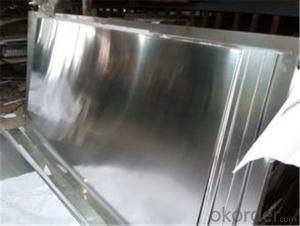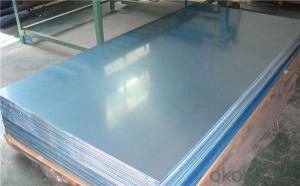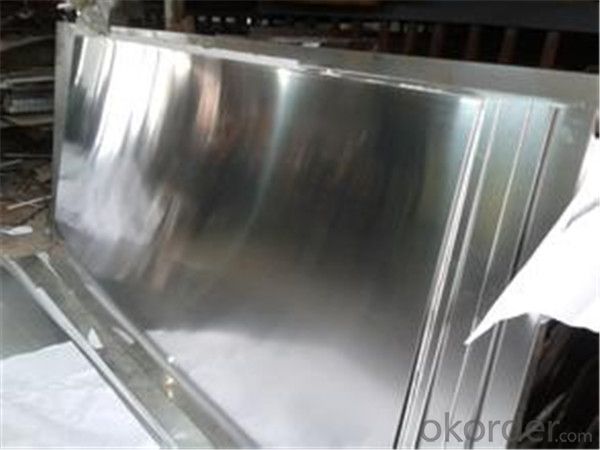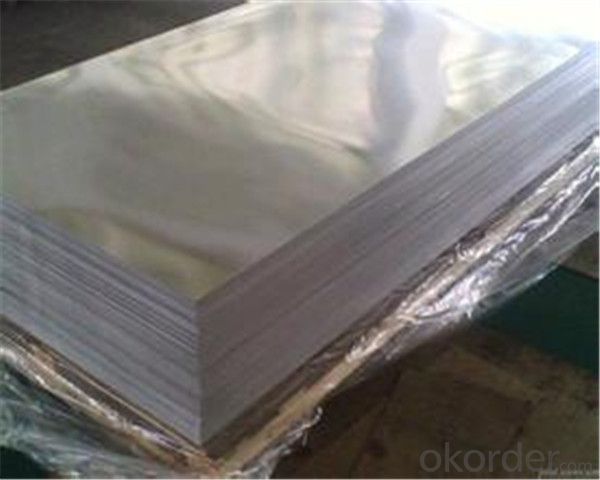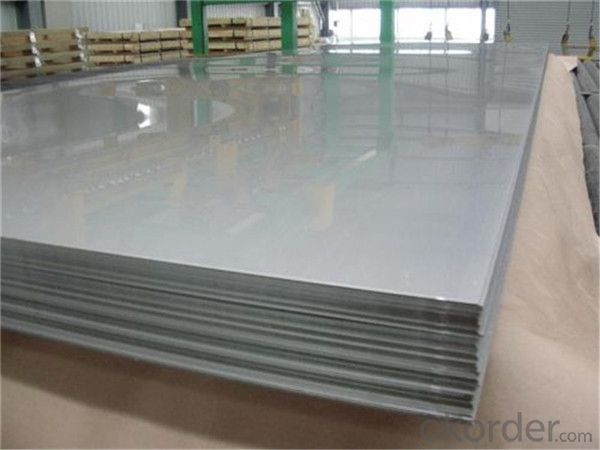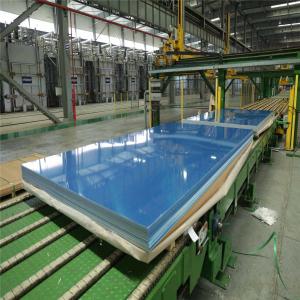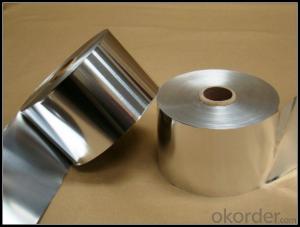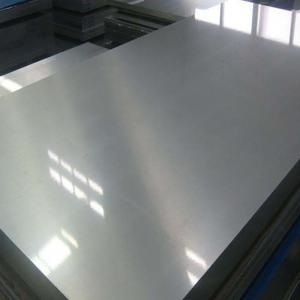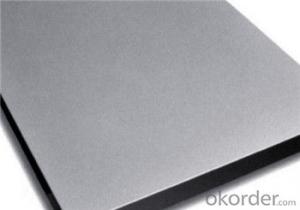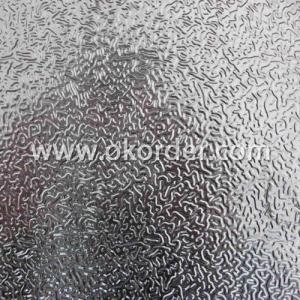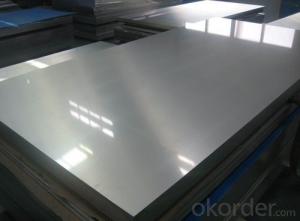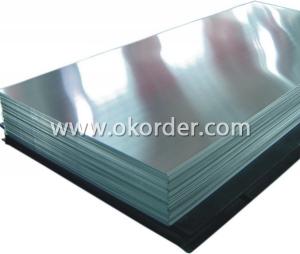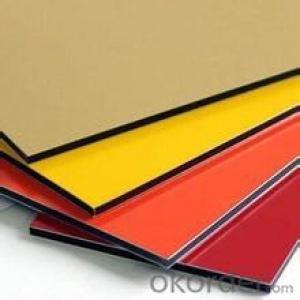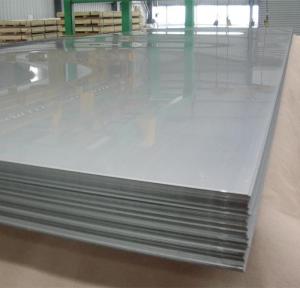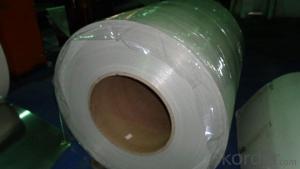Custom Anodized Aluminum Sheets 1050 1060 1070 1100 for Different Usage with High Quality and Low Price
- Loading Port:
- Shanghai
- Payment Terms:
- TT OR LC
- Min Order Qty:
- 5 m.t.
- Supply Capability:
- 10000 m.t./month
OKorder Service Pledge
OKorder Financial Service
You Might Also Like
Description
Aluminum sheet checkered /Aluminum sheet embossing sheet
| Material | 1000 series: 1050. 1070. 1100 2025. 2117. 2218. 2618. 6000 series: 6005. 6011. 6053. 6351. 6061. 6101. 6151. 6201. 6261. 6262. 6063. 6463. 6066.6070 7000series: 7001. 7005. 7072. 7075. 7076. 7175. 7178. 7079 8000 series:8011,8021,8079 etc |
| Standard | GB/T17748-2008 |
| Certification | ISO9001,ISO14001, ISO9001:2000 |
| Temper | T4,T5,T6,H111,H112 |
| Surface treatment | Polished,Mill Finished,anodized or power sprayed |
| Features | High weather resistance anti scratch anticorrosion and good weather resistance subtle edges and elegant appearance and easy processing and installation high brightness and hardness |
| Resolution | 2%-98% |
| Advantages | 1)Excellent machining properties 2)Suited to marine and low temp applications |
| Note | If you have any other questin,welcome for your consultation |
1)Chemical compositions&mechanical property&Size
Alloy | Si | Fe | Cu | Mn | Mg | Cr | Zn | Ti | Al |
5005 | 0.30 | 0.70 | 0.20 | 0.20 | 0.50-1.10 | 0.10 | 0.25 | - | spare |
5052 | 0.25 | 0.40 | 0.10 | 0.10 | 2.2-2.8 | 0.15-0.35 | 0.10 | spare | |
5083 | 0.40 | 0.40 | 0.10 | 0.40-1.0 | 4.0-4.9 | 0.05-0.25 | 0.25 | 0.15 | spare |
6060 | 0.30 -0.6 | 0.10 -0.30 | ≤0.10 | ≤0.10 | 0.35~0.6 | ≤0.05 | ≤0.15 | ≤0.10 | spare |
Alloy | Thickness (mm) | Width (mm) | Length (mm) | Temper | DC or CC | |
1050,1060, 1070,1100, 1235 | 1)0.2-3.0; 2)3.0-150 | 300-1850; 900-1900 | 1000-8000 | 1)O,H12,H22, H14,H24,H26, H18,H32, 2)H112,H111; | 1)DC,CC 2)DC | |
3003,3004, 3105,3005 | 1)0.2-3.0; 2)3.0-150 | 30-1850 900-1900 | 1000-8000 | 1)O,H12,H22, H14,H24,H26, H18,H32, 2)H112,H111; | 1)DC,CC 2)DC | |
5052,5083, 5754,5005 | 1)0.2-3.0 2)3.0-150 | 300-1850 900-1900 | 1000-8000 | 1)O,H12,H22, H14,H24,H26, H18,H32, 2)H112,H111; | 1)DC 2)DC | |
6061,6063 | 0.5-3.0 | 300-1500 | 1000-6000 | T6,T321 | DC | |
6060 | 0.2-100 | 200-1500 | ≤12000mm | T4,T5,T6, H111,H112 | DC | |
| Application | 1) Home Lighting Lighting Network; 2)Solar reflective pieces; 3)architectural appearance; 4)Indoor decoration: ceiling, metope, etc 5)drying cabinet; 6)elevator; 7)scutcheon, luggage etc; 8)The car inside and outside decoration; 9) Indoor decorations, such as picture frames; 10) Household appliances: refrigerators microwave audio equipment, etc 11)Aerospace and military aspects, such as China's large aircraft manufacturing, the shenzhou spacecraft series, satellites, etc 12)Precision Parts Processing; 13)mould making; 14)Chemical/thermal insulation pipe coating etc |
Packaging & Shipping
Package: Standard seaworthy packing or as per request
Transports:Containler sizes:
20ft GP:5898mm(Length)x2352mm(Width)x2393mm(High)
40ft GP:12032mm(Length)x2352mm(Width)x2393mm(High)
Our Services
1 Customer and reputation first
2 Timely feedback
3 Low MOQ
4Timely delivery
5 Competitive price
6Different size can be supplyed as your request
7 Professional service of technical and shipping support
8More than 30 years experience in the cold and hot rolled sheet/coil/stri experience
Photos
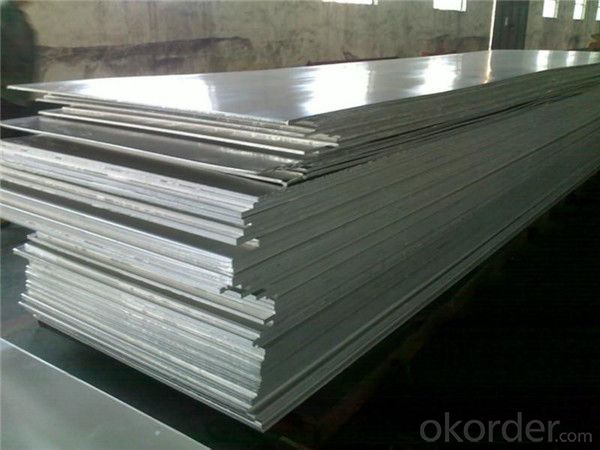
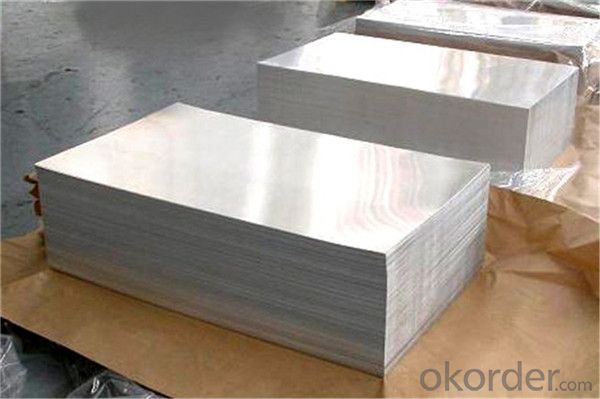
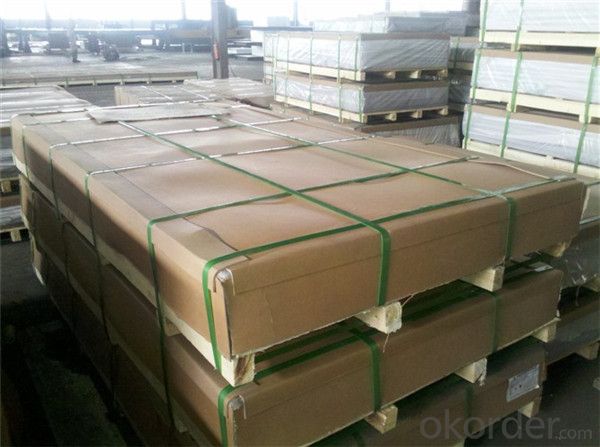
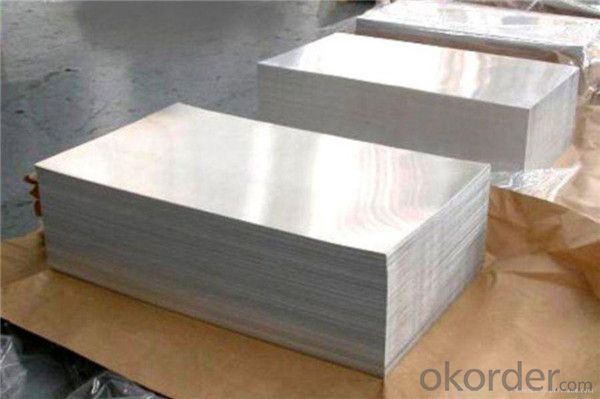
- Q: What are the different types of surface treatments available for anodized aluminum sheets?
- There are several different types of surface treatments available for anodized aluminum sheets. These treatments can enhance the appearance, durability, and functionality of the aluminum surface. 1. Brushed Finish: This treatment involves brushing the surface of the aluminum sheet with abrasive materials to create a pattern of parallel lines. It gives the sheet a matte appearance and helps to hide scratches and fingerprints. 2. Mirror Finish: In this treatment, the aluminum sheet is polished to a high gloss finish, creating a mirror-like reflection. This finish is commonly used in decorative applications and gives a sleek and modern look to the aluminum surface. 3. Etched Finish: Etching involves using chemicals or abrasive materials to remove a thin layer of the anodized coating from the aluminum surface. This creates a textured or patterned design on the sheet. Etching can be done in various depths and designs, allowing for customization and unique aesthetics. 4. Powder Coating: Powder coating is a popular surface treatment where a dry powder is electrostatically applied to the anodized aluminum sheet and then cured under heat. This creates a durable and resistant coating that can be customized in terms of color, texture, and finish. 5. Satin Finish: Satin finish involves sanding the aluminum sheet with fine grit sandpaper to create a smooth, brushed appearance. It provides a subdued and elegant look to the aluminum surface. 6. Mechanical Finishes: Mechanical finishes include various techniques like polishing, buffing, or grinding to achieve different surface textures and finishes. These finishes can range from smooth and glossy to rugged and textured, depending on the desired effect. 7. Chemical Treatments: Chemical treatments such as anodizing, chromating, or chemical brightening can be used to enhance the corrosion resistance, color, and overall appearance of the aluminum sheet. These treatments can also improve the adhesion of paints or adhesives to the surface. It is important to note that the availability of these surface treatments may vary depending on the manufacturer and specific requirements. It is recommended to consult with the supplier or manufacturer to determine the most suitable surface treatment for your application.
- Q: How do I choose the right thickness for my aluminum sheet?
- When choosing the right thickness for your aluminum sheet, there are several factors you should consider. Firstly, you need to determine the specific application or purpose for which you will be using the aluminum sheet. Different projects may require different thicknesses based on the structural or aesthetic requirements. For instance, if you are using aluminum sheets for roofing or siding, a thicker gauge might be necessary to provide sufficient durability and resistance to weather conditions. Secondly, you should consider the level of strength and rigidity required. Thicker aluminum sheets generally offer greater strength and stability, which is crucial for applications such as construction or automotive components. However, keep in mind that thicker sheets may also be heavier and more difficult to work with, so consider the practicality and weight limitations of your project. Additionally, it is important to think about the size of the aluminum sheet you need. Larger sheets may require thicker gauges to maintain their structural integrity, while smaller sheets may not need as much thickness. Lastly, consider your budget. Thicker aluminum sheets can be more expensive due to the increased material cost and manufacturing process. Strike a balance between the required thickness and your budget constraints to ensure you make a cost-effective decision. In summary, choosing the right thickness for your aluminum sheet involves considering the specific application, required strength, size, and budget. It is recommended to consult with industry experts or suppliers who can provide guidance and advice based on your specific needs.
- Q: What are the dimensions of 101 aluminum sheets?
- The dimensions of 101 aluminum sheets can vary depending on the specific requirements and specifications of the sheets.
- Q: If I were to make an aluminum mold and cover it with a release agent, could I cast aluminum into it? Or would the two parts fuse together? I'm trying to find an alternative to sand casting.Thank you!
- Aluminum okorder /... I use investment lost wax casting.
- Q: Are aluminum sheets suitable for signage applications?
- Indeed, signage applications can benefit from the use of aluminum sheets. Due to its lightweight nature and durability, aluminum proves to be an ideal material for outdoor signs that must endure diverse weather conditions. Its resistance to rust and corrosion guarantees the sign's longevity. Moreover, aluminum sheets can be effortlessly customized and shaped into various sizes, enabling the creation of versatile and imaginative signage options. Furthermore, aluminum serves as an exceptional material for digital printing, producing top-notch graphics and images. All in all, aluminum sheets present remarkable durability, versatility, and aesthetic allure, cementing their status as a favored choice for signage applications.
- Q: Can the aluminum sheets be used for manufacturing food storage containers?
- Yes, aluminum sheets can be used for manufacturing food storage containers. Aluminum is a popular choice for food storage containers because it is lightweight, durable, and has excellent thermal conductivity. It can easily be formed into various shapes and sizes, making it suitable for different types of food storage needs. Additionally, aluminum is resistant to corrosion and can be easily cleaned, ensuring the safety and hygiene of the stored food.
- Q: Over the years, the thermite reaction has been used for welding railroad rails, in incendiary bombs, and to ignite solid-fuel rocket motors. The reaction is given below.Fe2O3(s) + 2 Al(s) 2 Fe(l) + Al2O3(s)What masses of iron(III) oxide and aluminum must be used to produce 10.0 g iron?a) iron (III) oxideb)aluminiumc)What is the maximum mass of aluminum oxide that could be produced?
- i'm uncertain regardless of the incontrovertible fact that it must be relaxing, are you making thermite? i might guess which you would be able to artwork this out from the atomic weights of each, and taking the valencies under consideration - 2 aluminium atoms for 3 oxygen atoms. 2 iron atoms for 2 oxygen (a million:a million).
- Q: bending, bending phenomenon will occur, I would like to annealing treatment. Does the master know the annealing temperature and time?
- Please call 0379-68311128 for technical consulting division wangke.
- Q: This question asks for a method to measure the thickness of an aluminum sheet.
- <p>To determine the thickness of an aluminum sheet, you can use a micrometer or a caliper, which are precise measuring tools. Place the sheet on a flat surface and measure from one side to the other at multiple points to account for any inconsistencies. Alternatively, you can use an ultrasonic thickness gauge, which is especially useful for non-contact measurements. For a quick estimate, a simple ruler can give you a rough idea, but for high precision, specialized tools are necessary. Always ensure the measuring device is calibrated and used correctly to get accurate results.</p>
- Q: What are the different types of surface coatings for aluminum sheets?
- There are several types of surface coatings available for aluminum sheets, including anodizing, powder coating, painting, and laminating.
Send your message to us
Custom Anodized Aluminum Sheets 1050 1060 1070 1100 for Different Usage with High Quality and Low Price
- Loading Port:
- Shanghai
- Payment Terms:
- TT OR LC
- Min Order Qty:
- 5 m.t.
- Supply Capability:
- 10000 m.t./month
OKorder Service Pledge
OKorder Financial Service
Similar products
Hot products
Hot Searches
Related keywords
